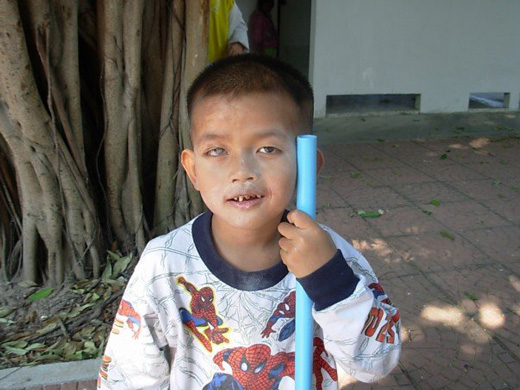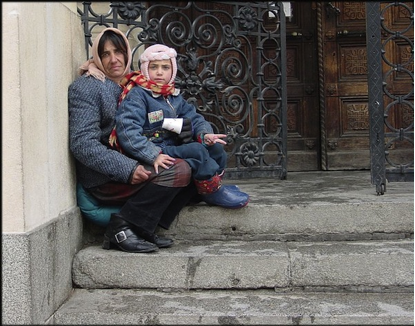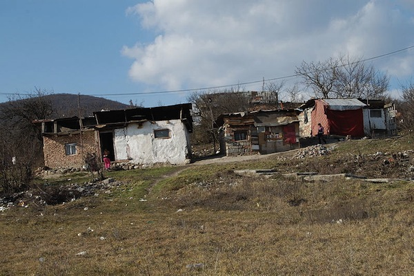In the summer of 2006, I started a degree in international studies. I had a great time exchanging ideas with like-minded people. I was learning a lot of theory on how to change the world, but I was missing something. How could I avoid becoming a bureaucrat who didn’t know the people whose needs I was supposed to be championing? To prevent this, I decided to do grassroots volunteering over my winter break.
While Googling websites, I came across the Camillian Social Center in Rayong, Thailand. The website’s description stated: “The Camillian Social Center in Rayong is confronting AIDS in the 21st century through prevention, treatment and care. We believe that prevention, treatment and care go together to reduce the potential for the transmission of the virus.” I knew instantly this was where I was going. I had always been intrigued by marginalized and excluded groups in society. This was my chance to help. When I told my family and friends how I was planning to spend my break, they stared at me either in disbelief or in admiration, as if I was risking my life.

When I arrived in Bangkok, I was excited because of the adventure that awaited me but, I hate to admit, I was also a bit scared. I had done some traveling by myself before, but never in a country like Thailand. That’s why, after trying in vain to explain where I wanted to go to the doorman of my Bangkok hotel, I chickened out and instead of taking the bus like the locals, I rented a taxi to go straight to my destination. Disappointed with my unnerved self, I decided not to give in to my fear anymore during the rest of my stay in Thailand.
And so the adventure begins
I was both excited and nervous when we arrived at the center. We passed through a gate and entered a big courtyard with some trees and a pond in the middle. In front of the buildings, several people were enjoying the shade in silence. Some were in wheelchairs, others in hospital beds. Here and there a person was sweeping the courtyard. As soon as I got out of the car, the taxi driver took off. He obviously did not feel at ease around sick people.
A really tall woman named Cindy came to welcome me. When she came closer, I realized Cindy hadn’t always been a woman. It was amazing how feminine she looked. At first, I felt a bit uncomfortable and was afraid of saying or doing something to insult her. But Cindy was quite open about her sexuality and she soon became the one I chatted with the most.
Cindy directed me to a building on the far end of the courtyard. Inside a big dining room, about twelve children of different ages and a few European men were having lunch. Cindy introduced me to Father Giovanni, the founder of the center.
Father Giovanni and his children
In 1995, Father Giovanni established the Camillian Social Center for the rejected: homeless people living with HIV or AIDS. Although he is a priest, he talks loudly, using lots of gestures and is not really a champion in subtleness; Father Giovanni is a rebel priest. Against the strict Catholic principles, he does not preach abstinence and heterosexual monogamy as the only way to prevent HIV. On the contrary, he kept joking about the homosexual orientation of some of the residents.
The children had just finished their lunch and were anxiously waiting to introduce themselves. Father Giovanni explained that most of the children from the center were at school but these were not welcome in any school because they had visual signs of their HIV-positive status.
Although HIV causes AIDS, a person can be HIV-positive for many years before experiencing any symptoms and developing AIDS. The HIV virus weakens the immune system until the serious damage results in the onset of AIDS. This is marked by the emergence of severe infections that would not develop in an individual with a healthy immune system. In theory, people don’t die from AIDS, but from one of the infections that were made possible by the absence of an immune system.

He called one of the girls over to him. “How old do you think she is?” he said. I guessed around four years old. “She is turning nine this year,” he responded. Pim was brought to the center by social workers after her grandfather had died. She had been taking care of him for years. The only food she had during those years was instant noodles once a day. She had only arrived to the center quite recently and the medication made her sick.
Over the weeks I was there, Father Giovanni told me all the children’s stories and most of them were as sad as Pim’s story. Kaimuk was 15 but looked like a 7-year-old. Chom was blind and contracted HIV as a result of a visit by a Dutch tourist to a “massage saloon.” Because she was blind, Ed was bed-ridden before she came to the center; at the age of 4, she had never learned to walk. AIDS had made all of them orphans and left them HIV-positive.
My first Thai friend
In the mornings, I worked at the Palliative Care Unit, or PCU, from 6 a.m. to 12 p.m. Two patients were assigned to me, one of which was Pung. He was about my age at the time and I could tell he used to be quite good looking. He had these huge brown puppy eyes that spoke more than words ever could. They always looked so sad. His body was wasting away and seemed to belong to an 80-year-old instead of to a 23-year-old man. It was heartbreaking to look at him in this condition. Pung might have made some bad decisions in his young life, but it was not my task to judge him.
It wasn’t easy to understand Pung, obviously because I didn’t speak Thai but also because he couldn’t utter more than a few sounds. You just had to read his eyes to know what he was trying to say. Sometimes that worked out but it wasn’t always easy. The first time I helped him eat, he kept asking for nam. After running back and forth with almost everything I found in the fridge, one of the carers told me he wanted one of the milky drinks. When I finally gave him one, he smiled for the first time. It seemed as if he was saying,
“That was a good one, wasn’t it?” Ever since our milk adventure, he smiled at me every time I passed by. Even when we had to take him out of bed to change the sheets and he seemed to be in excruciating pain, he tried not to show it. I had just made my first Thai friend.
My first Thai heartbreak
Pung was the first person I checked up on in the morning when I started work and I usually dropped by after lunch when the children were napping. One afternoon, I wanted to cheer up one of the other patients who had been feeling very sick that morning. When I entered the PCU there was a screen hiding Pung’s bed from view. At first, I didn’t know what was happening. I went to sit with one of the other patients who spoke a little bit of English and then I realized that Pung was dying. From across the room I could hear him breathing and one of the carers was holding his hand.
When I’m on my deathbed and someone asks what I regret about my life, I will remember that I didn’t go to Pung to hold his hand while he was dying. I couldn’t do it. It was the first time I witnessed someone dying.
I knew when it was over; the heavy breathing stopped and the carer came from behind the screen. In my mind, he looked at me with accusing eyes: “Why didn’t you sit beside him? You were his carer for the last few weeks.”

I was advised not to get too close to the critical patients. When someone ended up in the PCU, chances were low they were leaving it again. I decided not to follow this advice. These people were rejected by their families, their friends, and their communities. No matter what they had done in a past life, they deserved to have someone care for them when they die. During the rest of my time there, I was next to several people when they died. Books cannot teach what this experience has taught me about life. It is hard to point out what it exactly has done to me, but volunteering with these people has undoubtedly changed my life for the better. It made me realize how lucky I am and inspires me to do everything I can to improve the lives of people who are not so lucky.
An 8-year-old woman
Among the children I also had my favorites and Pim was one of them. She had only arrived recently and was not adjusted to the medication yet. One afternoon, I was playing with the other kids when I noticed Pim in the toilets. Something was clearly wrong. When I went to check up on her, she was cleaning up her vomit. She was embarrassed when she noticed me. I offered to help her clean it up but she didn’t let me. I often had the feeling with her that I was the kid and she was the grown-up. After Pung died, it was Pim who comforted me. Now, when I wanted to take care of her, she didn’t let me. Not the fact that she was feeling sick saddened me, but that an 8-year-old girl was cleaning up her own puke. She should have someone to hold her hair while she was throwing up and tuck her into bed when she was sick. This was typical for all the kids there; although they still played like children, circumstances had forced them to be more mature than others at their age.

Love and hope in the time of AIDS
A lot of heartbreaking things happened at the center, but there was also hope. The oldest child, an 18-year-old, was one of the best students in her class and just got her first boyfriend. When she finishes school, she wants to go to university and come back to help at the center. A woman who had been close to dying in the PCU, miraculously got better and was working in the center now as a carer. A male carer, who used to be a violent gang member but was now one of the sweetest men ever, was married to an HIV-positive woman with whom he had a beautiful daughter. There was even a love story. Two of the residents had fallen in love and were caught together in bed. The gossip queens really enjoyed the story the next day!
Most of the residents in the center used to work as go-go dancers, masseuses, strippers, and escorts. They were some of the most fun people I have ever met. A male go-go dancer was constantly talking about his past adventures and liked to dress up extravagantly. A blind masseuse gave me Thai massages every afternoon, which were painfully relaxing. Although we couldn’t have a real conversation because of my lack of knowledge of the Thai language, we understood each other’s jokes and gestures. These people who knew the end of their lives would come sooner than others were making the most of what time they had. This attitude made them more fun to hang out with than most healthy people.
The ‘good-bye, I’ll be back as soon as I can’
I had become fond of all the people there: the dying, the children, the carers, and the other residents. Each one of them was unique. I also would never forget the ants in my room and the dogs outside. Every day I fought my own war against both. It was part of my morning ritual to kill the ants with a bucket of water, but they kept coming back. The dogs were worse. Every morning when I left and every evening when I returned, they were barking and running toward me. One of my housemates gave me an umbrella in case I had to defend myself against these monsters.
But in the end, I still absolutely hated saying goodbye; my last day was torture. I had promised to come back in six months, but I knew some of these great people were not going to be there anymore.
It took me another week after I got home to adjust to “normal” life. It annoyed me that people were complaining about minor problems, while these people who were so much worse off were making the best of each day. It’s a common problem for people returning from volunteering in developing countries. It takes a while before you can put the experience into perspective and start complaining yourself about the amount of work you have to do that week.
After this experience, I was more convinced than ever about the need for development policies and efforts to focus more on the most excluded and marginalized groups in society. A country cannot make true progress if it leaves some of its citizens behind in extreme misery.
Want to volunteer?
More information on donating or volunteering for the Camillian Social Centre in Rayong: http://www.camillian-rayong.org/
Volunteering opportunities in new Camillian center for children living with HIV/AIDS or a disability near Bangkok:
Contact: faisal1rcr@hotmail.com
http://www.camillianhomelatkrabang.org/
- Follow us on Twitter: @inthefray
- Comment on stories or like us on Facebook
- Subscribe to our free email newsletter
- Send us your writing, photography, or artwork
- Republish our Creative Commons-licensed content




